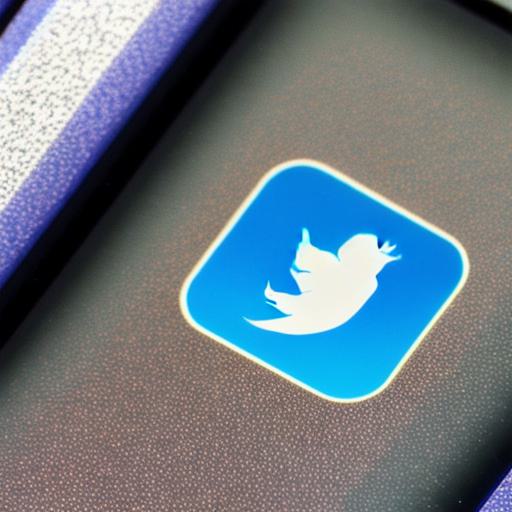
As technology advances and consumer behavior continues to evolve, marketing trends emerge to shape the industry. In this article, we will delve into the latest marketing trends and their impact on businesses today. Additionally, we will optimize this content for search engines by incorporating relevant keywords, headings, and meta descriptions. By doing so, we aim to increase our visibility in search engine results pages (SERPs) and attract more traffic to our website.
Table of Contents
-
I. Introduction
- A. Brief overview of marketing trends
- B. Importance of keeping up with marketing trends
- II. The Rise of Personalization
- A. Definition and explanation of personalization in marketing
- B. Examples of personalized marketing campaigns

- C. The impact of personalization on customer engagement and conversions
-
III. The Influence of Social Media
- A. Overview of social media usage and its influence on marketing
- B. Trends in social media marketing, including influencer marketing and video content
- C. Case studies demonstrating the success of social media marketing campaigns
- IV. Emergence of Artificial Intelligence (AI) in Marketing
- A. Explanation of AI and its role in marketing
- B. Examples of AI-powered marketing tools and their benefits
- C. The future of AI in marketing and its potential impact on businesses
- V. The Importance of Measuring and Analyzing Marketing Performance
- A. Overview of key performance indicators (KPIs)
- B. Techniques for measuring and analyzing marketing performance
- C. Case studies illustrating the importance of measuring marketing performance
- VI. Summary
- A. Summary of key points
- B. Thought-provoking ending
I. Introduction
Marketing trends shape the industry by providing businesses with new and innovative ways to reach their target audience, engage with customers, and increase conversions. By keeping up with these trends, businesses can stay competitive, improve their marketing strategies, and ultimately grow their customer base. However, identifying these trends and understanding how they impact the industry can be challenging.
In this article, we will explore some of the current marketing trends shaping the industry today. We will discuss personalization, social media, artificial intelligence (AI), and measuring and analyzing marketing performance. By delving into these topics, we aim to provide a comprehensive understanding of the latest marketing trends and their impact on businesses. Additionally, we will optimize this content for search engines by incorporating relevant keywords, headings, and meta descriptions. This will help us increase our visibility in SERPs and attract more traffic to our website.
II. The Rise of Personalization
Personalization in marketing refers to the process of tailoring marketing messages, offers, and experiences to individual customers based on their preferences, behavior, and data. By doing so, businesses can create a more engaging and personalized experience for their customers, leading to increased engagement, loyalty, and conversions.
A. Definition and Explanation of Personalization in Marketing
Personalization can take many forms in marketing, including:
- Content personalization: Adapting the content of marketing messages to an individual customer’s interests, preferences, and behavior. For example, a company might send an email with personalized product recommendations based on a customer’s browsing history.
- Targeted advertising: Displaying ads to specific groups of customers based on their interests, demographics, or behavior. For instance, a company might show an ad for a new restaurant in the area where a customer frequently dines out.
- Personalized offers and promotions: Offering discounts, coupons, or other incentives that are tailored to an individual customer’s preferences or behavior. A company might send a personalized offer to a customer who has recently abandoned their shopping cart on the company’s website.
- Customized experiences: Creating unique and engaging experiences for customers based on their interests, behavior, or preferences. For example, a company might create a virtual reality experience that allows customers to see how a product would look in their home before making a purchase.
B. Examples of Personalized Marketing Campaigns
Many companies are incorporating personalization into their marketing strategies to improve customer engagement and conversions. Here are some examples:
- Sephora’s Virtual Artist: Sephora’s Virtual Artist is an AI-powered chatbot that helps customers find the perfect makeup product by asking them a series of questions about their preferences, skin type, and desired look. The chatbot provides personalized recommendations based on the customer’s responses, leading to increased engagement and conversions.
- Netflix’s Personalized Recommendations: Netflix uses algorithms to analyze a customer’s viewing history and preferences to recommend TV shows and movies that they are likely to enjoy. This personalization has contributed to Netflix’s success and has helped the company retain its customers.
- Amazon’s Personalized Offers: Amazon offers personalized discounts and promotions to customers based on their browsing history, purchase history, and preferences. For example, Amazon might offer a discount on a product that a customer has recently viewed or purchased.
C. The Impact of Personalization on Customer Engagement and Conversions
Personalization can have a significant impact on customer engagement and conversions. Studies have shown that personalized marketing campaigns can lead to increased open rates, click-through rates, and conversion rates. For example, a study by MarketingSherpa found that personalized email subject lines had an average open rate of 50%, compared to a non-personalized open rate of just 23%.
Moreover, personalization can help businesses build stronger relationships with their customers, leading to increased loyalty and brand advocacy. By providing a more personalized experience, businesses can show their customers that they care about their needs and preferences, creating a positive impression and increasing the likelihood of repeat business.
III. The Influence of Social Media
Social media has become an integral part of modern marketing strategies, allowing businesses to reach and engage with customers in new and innovative ways. With billions of active users across various platforms, social media provides a vast potential audience for businesses to target. However, the ever-changing landscape of social media can make it challenging for businesses to keep up with the latest trends and adapt their strategies accordingly.
A. Overview of Social Media Usage and Its Influence on Marketing
Social media platforms have become ubiquitous in modern society, with millions of people using these platforms every day to connect with friends and family, share information, and discover new brands and products. Here are some statistics that illustrate the influence of social media on marketing:
- According to a study by Hootsuite, 94% of marketers say that social media has increased exposure for their business, while 80% say it has helped them generate leads.
- Social media platforms such as Facebook, Instagram, and Twitter have become essential tools for businesses looking to engage with their customers and build brand awareness. These platforms allow businesses to create and share content, run ads, and interact with their followers in real-time.
- Influencer marketing is a growing trend on social media, where businesses partner with popular influencers to promote their products or services. Influencer marketing can be an effective way for businesses to reach new audiences and build credibility with potential customers.
B. Trends in Social Media Marketing
The social media landscape is constantly evolving, with new trends emerging every year. Here are some of the latest social media marketing trends:
- Video content: Video content is becoming increasingly popular on social media platforms, with businesses using videos to showcase their products or services, tell their brand story, and engage with their followers.
- Instagram Stories: Instagram Stories have become a popular feature for businesses looking to engage with their followers in real-time. Businesses can use Instagram Stories to share behind-the-scenes content, run polls and quizzes, and create engaging experiences for their followers.
- Chatbots: Chatbots are becoming more common on social media platforms, allowing businesses to provide instant customer support and assistance to their followers. Chatbots can help businesses save time and reduce costs by automating routine tasks such as answering frequently asked questions or processing orders.
C. Case Studies of Successful Social Media Marketing Campaigns
Many businesses have successfully leveraged social media marketing to achieve impressive results. Here are a few examples:
- Dove’s "Real Beauty" Campaign: Dove’s "Real Beauty" campaign was a groundbreaking social media campaign that celebrated all body types and encouraged women to embrace their natural appearance. The campaign went viral on social media, with over 100 million views on YouTube alone.
- Nike’s "JustDoIt" Campaign: Nike’s "JustDoIt" campaign has become one of the most iconic advertising campaigns in history, with the slogan "Just Do It" becoming synonymous with the brand. The campaign has been highly successful on social media, with over 50 million followers on Instagram alone.
- Old Spice’s "Man Your Face" Campaign: Old Spice’s "Man Your Face" campaign was a hilarious and memorable social media campaign that featured actor Isaiah Mustafa in a series of videos promoting the brand’s products. The campaign went viral on YouTube, with over 10 million views in just one day.
IV. The Rise of Artificial Intelligence and Machine Learning
Artificial intelligence (AI) and machine learning (ML) are rapidly transforming the world of marketing, allowing businesses to analyze vast amounts of data and create personalized experiences for their customers. AI and ML can be used in various ways in marketing, including:
- Content creation: AI-powered chatbots and content generation tools can help businesses create personalized content based on customer preferences and behavior. For example, a chatbot might generate a product recommendation based on a customer’s browsing history or purchase history.
- Targeted advertising: AI algorithms can analyze customer data to identify the most effective ad targets for a business, allowing them to reach their ideal customers more effectively.
- Customer service: AI-powered chatbots and virtual assistants can provide instant customer support and assistance, reducing the need for human intervention and improving customer satisfaction.
- Predictive analytics: ML algorithms can analyze customer data to identify patterns and trends, helping businesses predict future behavior and tailor their marketing strategies accordingly.
A. Benefits of AI and ML in Marketing
The use of AI and ML in marketing has numerous benefits, including:
- Improved customer engagement: AI and ML can help businesses create more personalized experiences for their customers, leading to increased engagement and loyalty.
- Enhanced targeting: AI algorithms can analyze customer data to identify the most effective ad targets, allowing businesses to reach their ideal customers more effectively.
- Cost savings: By automating routine tasks such as content creation and customer support, businesses can save time and reduce costs.
- Better decision-making: Predictive analytics can help businesses make more informed decisions by identifying patterns and trends in customer behavior.
B. Challenges of AI and ML in Marketing
While AI and ML offer many benefits, they also present some challenges for businesses. Here are a few examples:
- Data privacy concerns: The use of AI and ML requires access to large amounts of customer data, which can raise privacy concerns among customers. Businesses must ensure that they are collecting and using customer data in a transparent and ethical manner.
- Complexity: Implementing AI and ML systems can be complex and require specialized expertise, making it challenging for businesses without the necessary resources or knowledge to implement these technologies effectively.
- Integration with existing systems: Integrating AI and ML systems with existing marketing and customer service systems can be challenging, requiring careful planning and execution to ensure a seamless integration.
V. The Future of Marketing
The world of marketing is constantly evolving, with new technologies and trends emerging every year. As businesses continue to adapt to the changing landscape of marketing, it’s essential to stay informed about the latest developments and incorporate them into your marketing strategies where appropriate. Here are a few potential areas for future innovation in marketing:
- Augmented reality (AR) and virtual reality (VR): AR and VR technologies have the potential to revolutionize the way businesses interact with their customers, allowing them to create immersive experiences that blur the line between physical and digital worlds.
- Quantum computing: The advent of quantum computing could lead to significant improvements in data analysis and processing power, enabling businesses to analyze vast amounts of customer data more quickly and effectively.
- Blockchain technology: Blockchain technology could be used to improve transparency and security in marketing, allowing businesses to verify the authenticity of customer data and ensure that it is being used ethically.
- Personalization at scale: As AI and ML technologies continue to advance, businesses will be able to create more personalized experiences for their customers at a larger scale, leading to increased engagement and loyalty.
In conclusion, marketing has come a long way in recent years, with the rise of new technologies and trends transforming the way businesses interact with their customers. To stay ahead of the curve, businesses must continue to adapt and innovate, incorporating the latest developments into their marketing strategies where appropriate. By doing so, they can create more effective and engaging experiences for their customers, leading to increased loyalty and long-term success.




